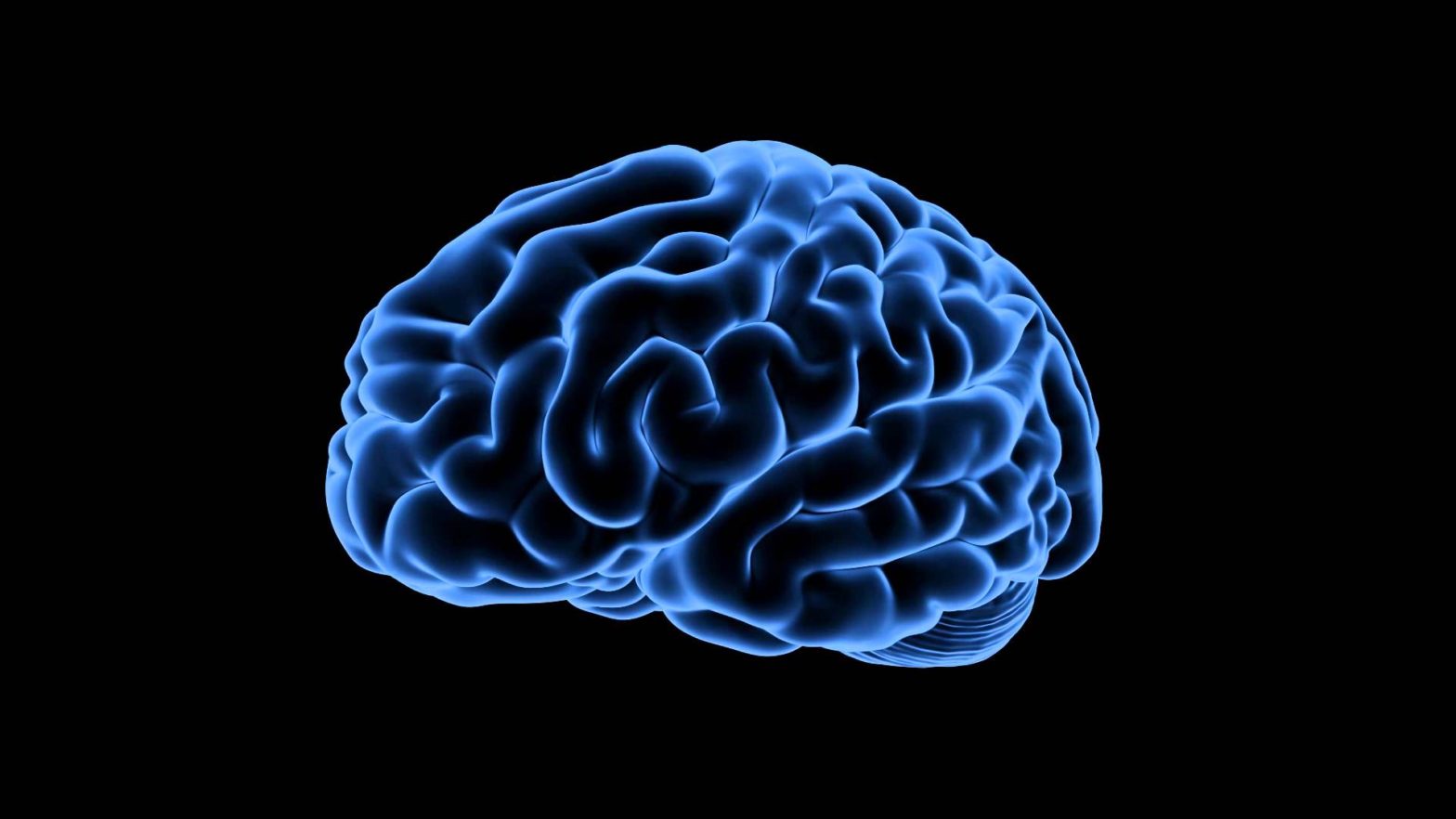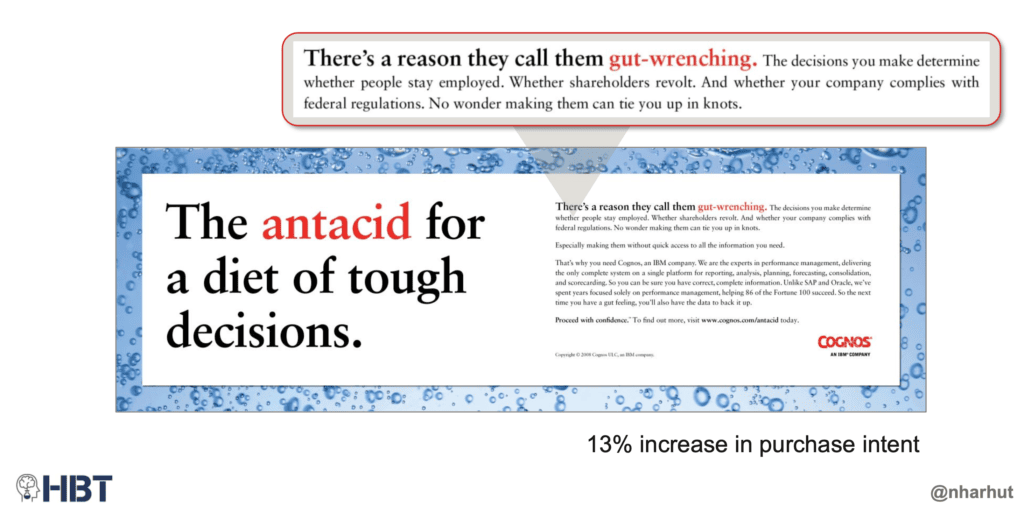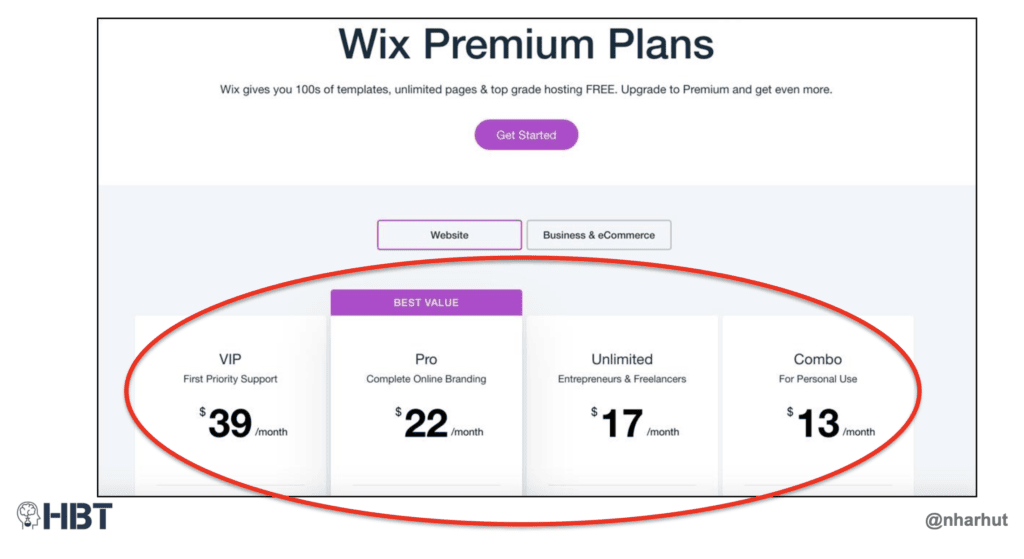
Is Your Marketing Brain-Friendly?

“We have been lied to … told to get the right message to the right person at the right time,” says author and marketer Nancy Harhut.
What marketers haven’t been told is that the message needs to be delivered “in the right way … a brain-friendly way,” Nancy adds.
At the Marketing Profs B2B 2023 conference, Nancy shared practical lessons that help marketers make smarter choices as we frame appeals to clients and customers.
The human brain instinctively seeks to save energy. As Daniel Kahneman, author of Thinking Fast and Slow, wrote, “The brain doesn’t like logical, rational, conscious thinking – and will take any shortcut it can.”
Human brains love to take shortcuts
Shortcuts ease the cognitive load – the work brains have to do. In Kahneman’s book, he notes that when a brain uses its automatic (System 1) brain to make decisions, it saves the greater amount of energy required to engage the deliberate brain (System 2).
“Decision-making shortcuts are hardwired evolutionary impulses that get us through the day with as little effort as possible … We have hundreds of automatic impulses,” Nancy says.
The takeaway: Marketers gain a competitive edge when they embed the right triggers and prompts into marketing executions.
For example, Cognos created this ad that compares its solution to an “antacid” that helps leaders make “gut-wrenching” decisions. The result of a more emotional, visceral appeal: purchase intent rose 13%.

People’s emotions lead to decisions
“It’s not about how people think, but how they feel,” Harhut adds. “Emotions drive decisions.” While people need both rational and emotional inputs, boosting the emotional inputs can measurably improve results.
She cites marketing from United Rentals, which rents construction equipment.
Its ad says, “It’s 4 pm. Your excavator just broke down. Concrete needs to be poured tomorrow. Consider it done.” Address buyers’ emotions first.
People hate to lose
Humans are twice as motivated to avoid losses, compared with making gains. FOMO, the fear of missing out, drives many human behaviors.
That’s why limited-time offers, countdown clocks, and “only one left at this price” succeed in prompting buyers to decide now rather than later.
Since people fear making commitments, preserve their choices and options as much as possible.
You overvalue what you own
Another shortcut the brain loves is the endowment affect. People demand more to give up an item they already own than they would spend to acquire the same item.
“Once it’s yours, you over-value it.”
Smart marketing makes people feel like they own something already. That’s why these appeals work:
- “I got you $1000 in free credits.”
- “If you delete your account, you’ll lose access to all your data.”
- “Imagine …”
“People are possessive,” Nancy says. “They don’t want to lose what they have. Use vivid language to create a mental picture the customer doesn’t want to give up.”
Humans love our autonomy
Humans innately seek a sense of control over ourselves and our environment. This shortcut is called autonomy bias.
Smart marketers strive to offer buyers a greater sense of control – for example, with opportunities to co-create solutions or to make choices. Offering choices makes people as much as four times more likely to buy.
One example of autonomy bias shows up in the pedestrian walk buttons in Manhattan. None of these buttons are actually wired to the traffic lights. But people who choose to press the walk button are far likelier to wait for a green light than to jaywalk.
Remind customers “but you are free” (BYAF), Nancy says. For example, offer a 100% money-back guarantee, so customers are free to return the product.
Tell customers: the choice is yours. Remind people they’re in control, so that they feel in charge.
People respond to labels
Label people by reminding them that they are members of a group. People who see themselves as members of a group are likely to behave the way they’re labeled.
For example, calling people “voters” rather than encouraging people “to vote” improved voter turnout by 15%, Jonah Berger notes.
Call customers “fans” and you make them likelier to show up that way. Use labels that are consistent with the behaviors you want to trigger – while staying consistent with your eventual ask.
Cite ideas from authorities
People defer to authorities, due to the authority principle. For example, we instinctively respond to people who wear uniforms.
That’s why this scam worked: thieves dressed up like security guards. They put a sign on an ATM or night depository, which told people that the machine was out of order, so they should give their money to the security guards.
People did just as they were told. They handed over their money to strangers because they were deferring to the uniforms. True story.
People rely on auditory cues
What we hear affects how we behave.
For example, when you say the word “because” and follow it with any reason, good or bad, more people will comply with your request. An experiment by Dr. Ellen Langer proved the importance of using the word “because.”
That’s why an appeal like this works: “Since you are a valued member of our community …”
Tap into people’s input bias, our tendency to assume the value of an output is determined by the amount of input. For example, “We’ve analyzed over 1 billion Tweets …” Wow, if they did all that work, it must be valuable.
People lock into what we hear first
What people hear first really matters. Negotiators use this tactic, called anchoring.
For example, the United Auto Workers (UAW) started negotiations with carmakers by calling publicly for a 40% raise. One result: Ford offered workers a contract with a much-bigger-than expected 25% raise over four years.
In marketing, apply anchoring by:
- Putting the most expensive item first in a list.
- Telling people the original price first, then a better price.
- Using a smaller type size to make the price look physically smaller.
- Comparing the price to something familiar and affordable, for example, “This price is a steal … about the same as buying 2 cups of coffee.”
Nancy cites this example from Wix, which lists the highest price first. Anchoring with a high price makes all the other prices seem more reasonable:

Frame your message solidly
Individual word choices affect people’s decisions. To be your customers’ hero, frame things in terms of the experiences customers will gain instead of the money they saved.
For example: “Saving energy means more money for your business needs.”
For more on the topic of framing, see Jonah Berger’s book Magic Words.
Nancy Harhut is author of the book Using Behavioral Science in Marketing: Drive customer actions and loyalty by prompting instinctive responses. She is the co-founder of HBT Marketing, and a frequent speaker at marketing conferences.
Co-creating the right message makes your marketing more meaningful and more effective. That’s why we help leaders, marketers and communicators deliver brain-friendly messages with a Message Map.

